Applied Thermodynamics Test 3
1/70
There's no tags or description
Looks like no tags are added yet.
Name | Mastery | Learn | Test | Matching | Spaced |
|---|
No study sessions yet.
71 Terms

Gas Carnot Cycle T-s Diagram
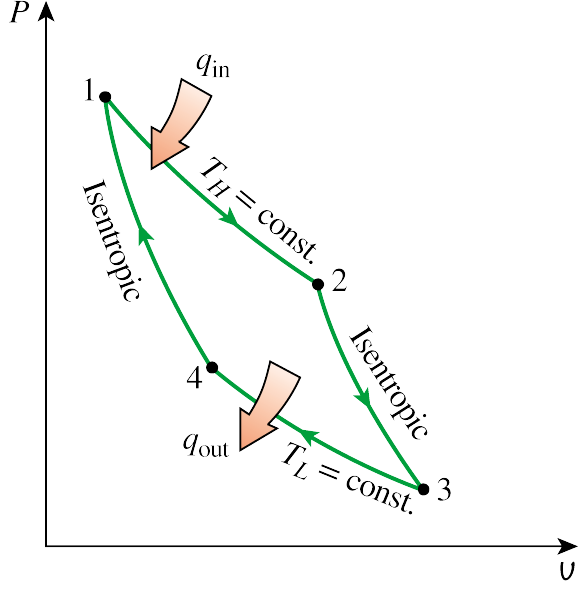
Gas Carnot Cycle P-v Diagram
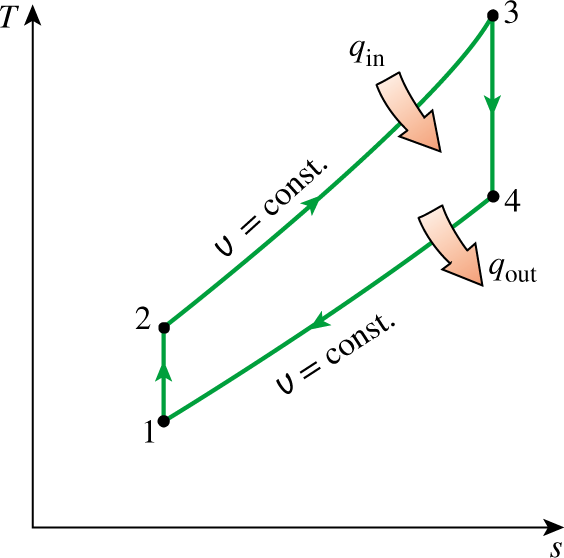
Otto Cycle T-s Diagram
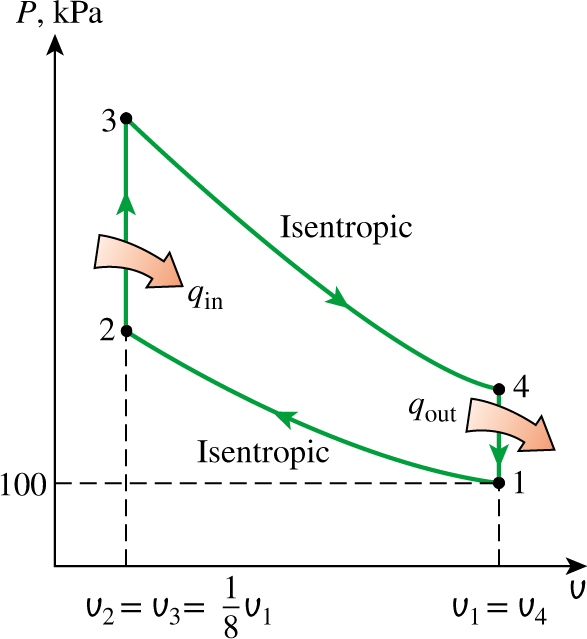
Otto Cycle P-v Diagram
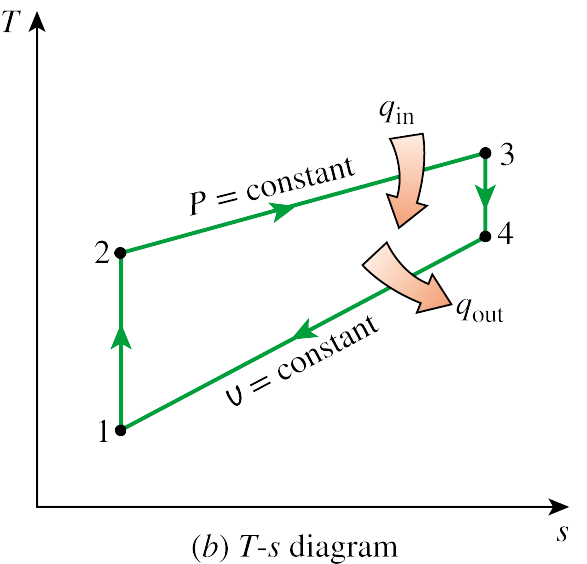
Diesel Cycle T-s Diagram
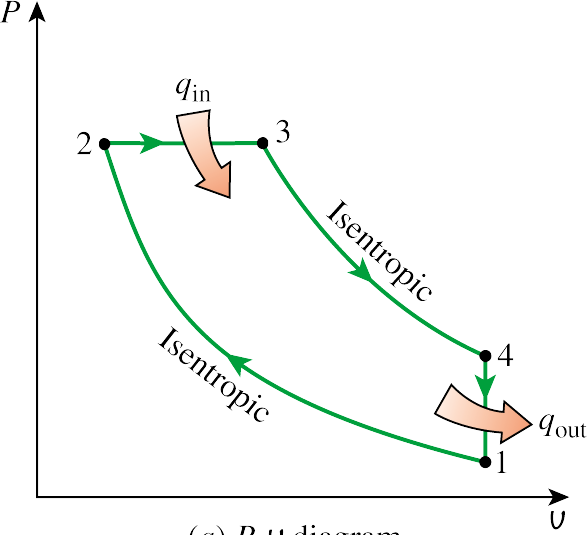
Diesel Cycle P-v Diagram

Dual Cycle P-v Diagram

Brayton Cycle P-v Diagram
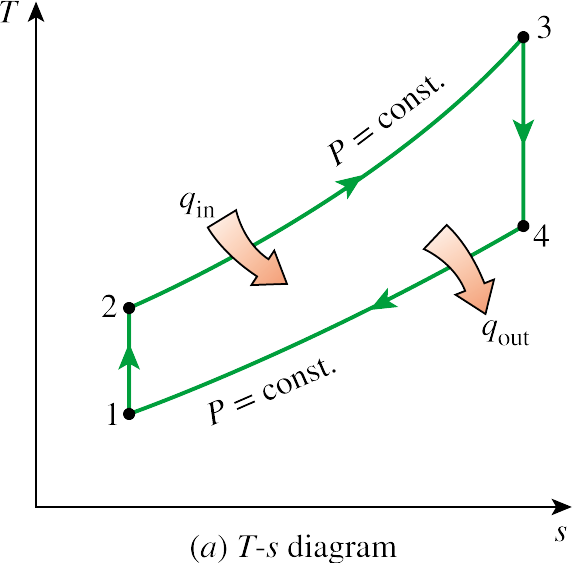
Brayton Cycle T-s Diagram
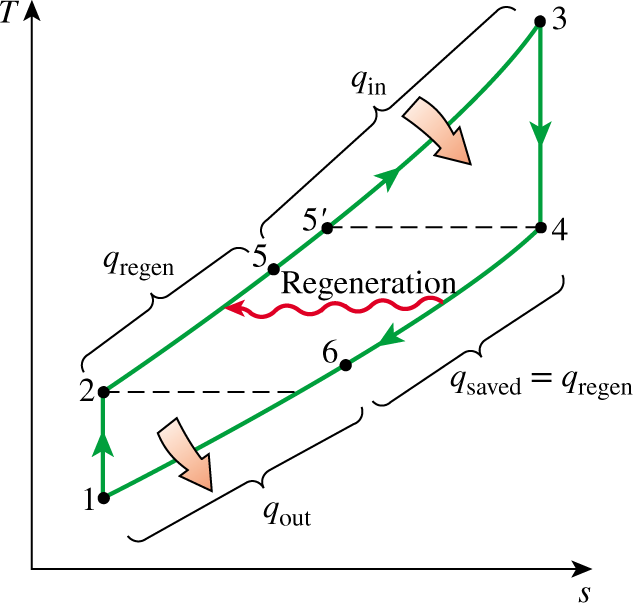
Brayton Cycle with Regeneration T-s Diagram
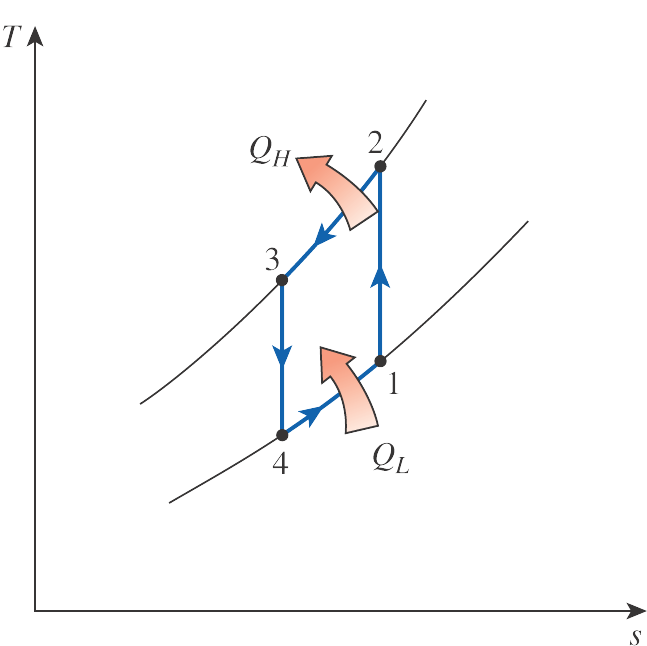
Reverse Brayton Cycle T-s Diagram

Reverse Carnot Cycle T-s Diagram
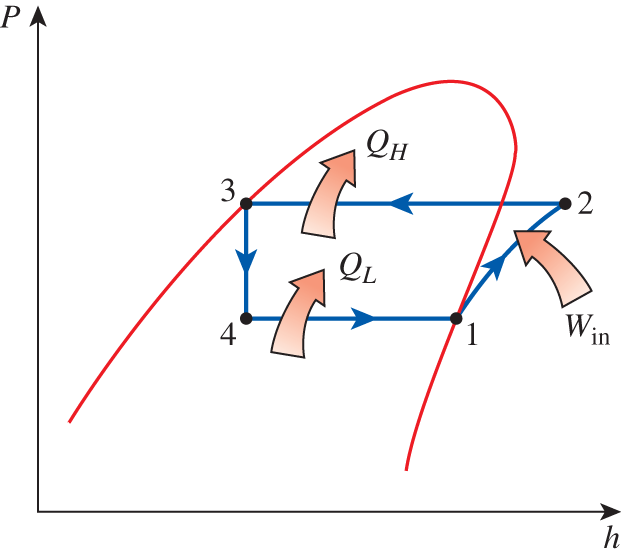
Ideal Vapor-Compression Cycle P-h Diagram

Ideal Vapor-Compression Cycle T-s Diagram
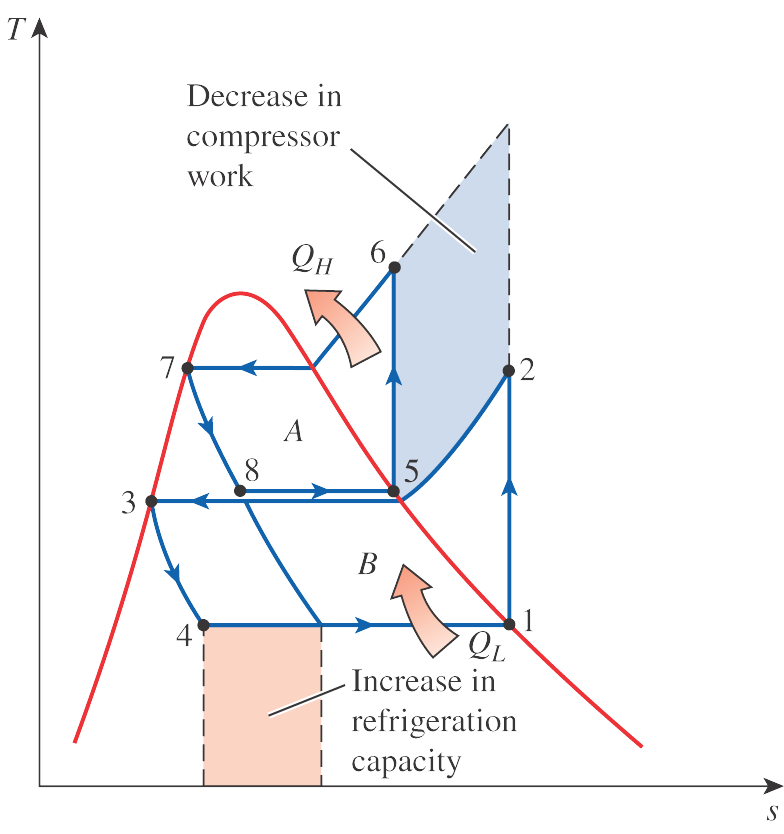
Cascade Refrigeration System T-s Diagram
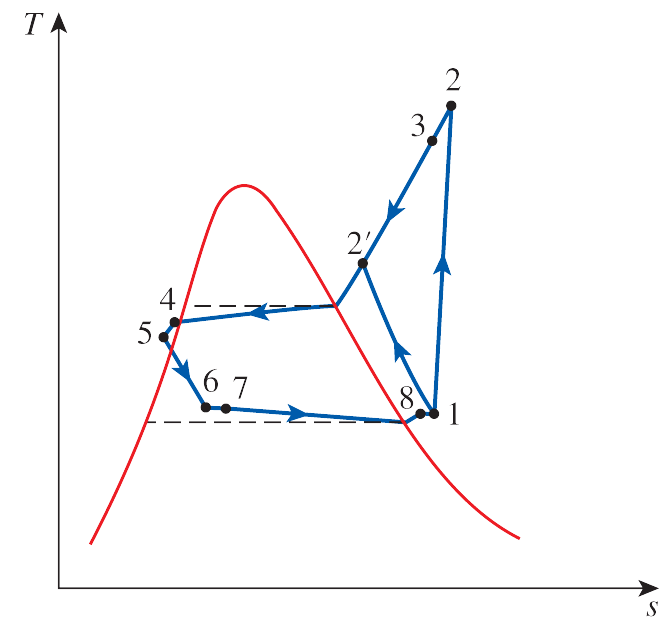
Actual Vapor-Compression Cycle T-s Diagram

Reverse Brayton Cycle with Regeneration T-s Diagram
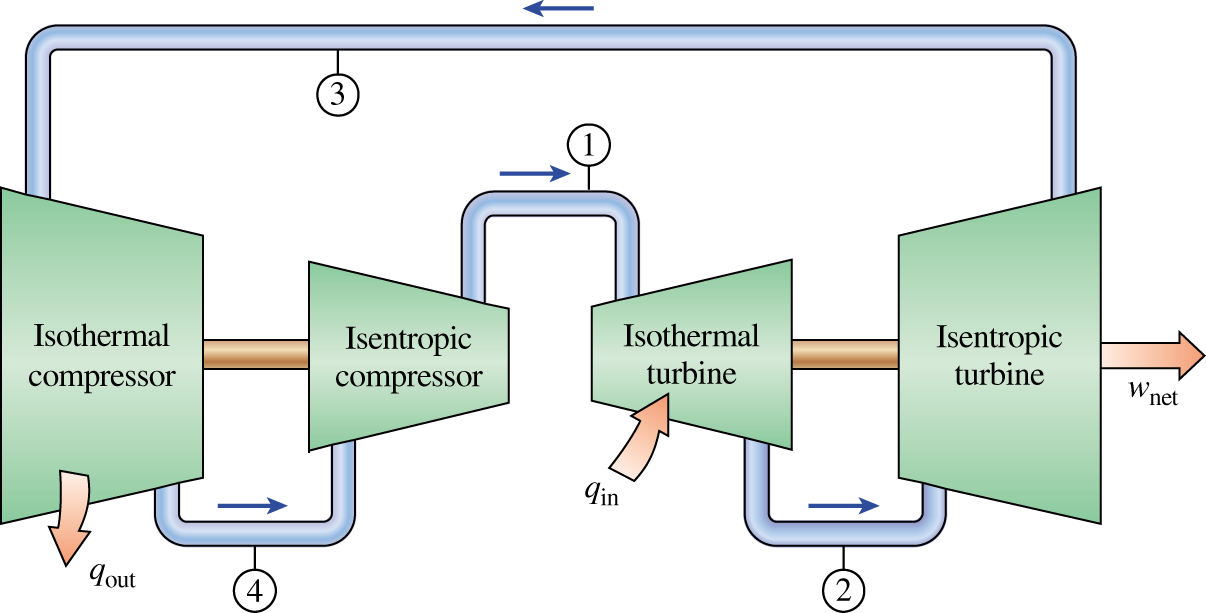
Gas Carnot Cycle Diagram
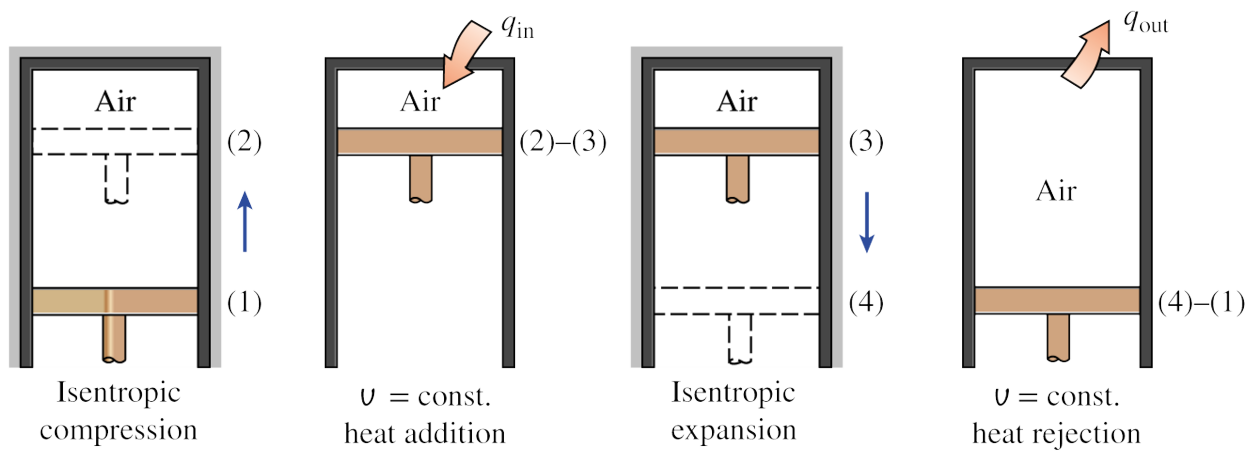
Otto Cycle Diagram
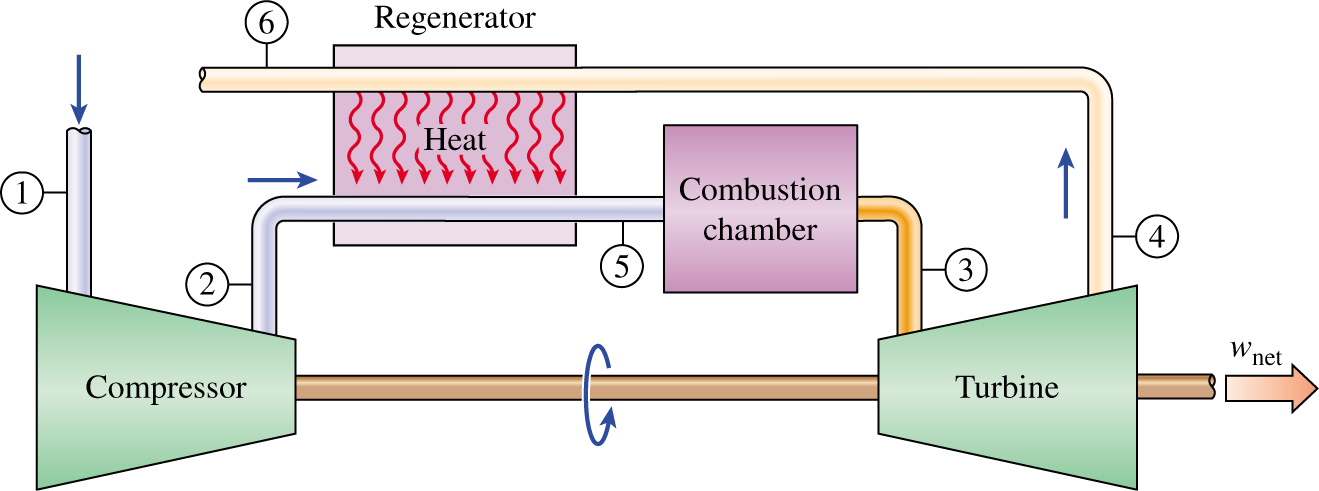
Brayton Cycle with Regeneration Diagram
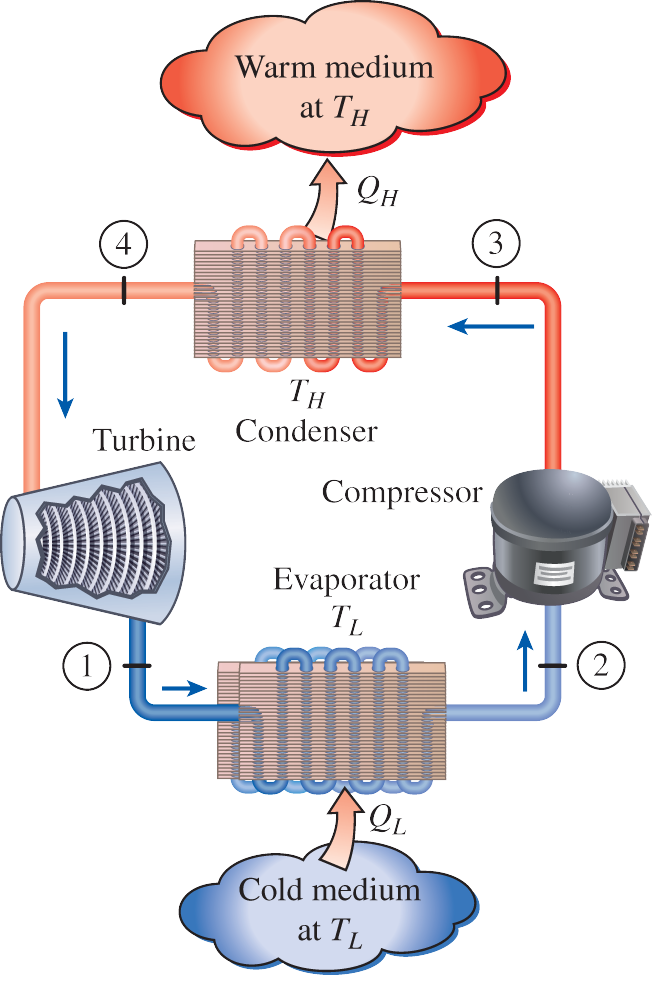
Reverse Carnot Cycle Diagram
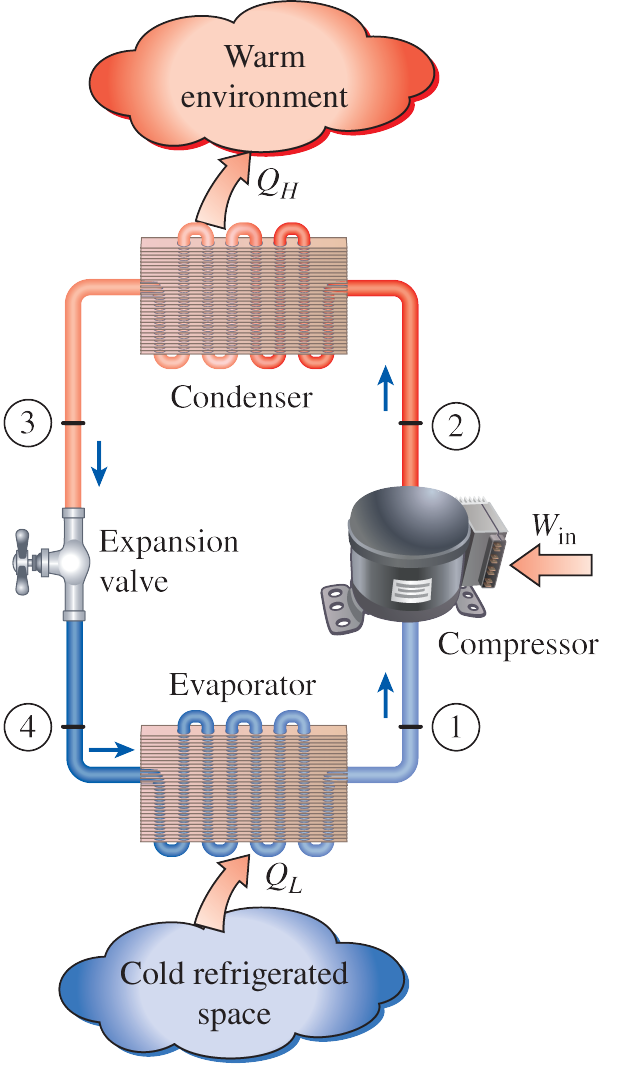
Ideal Vapor-Compression Cycle Diagram
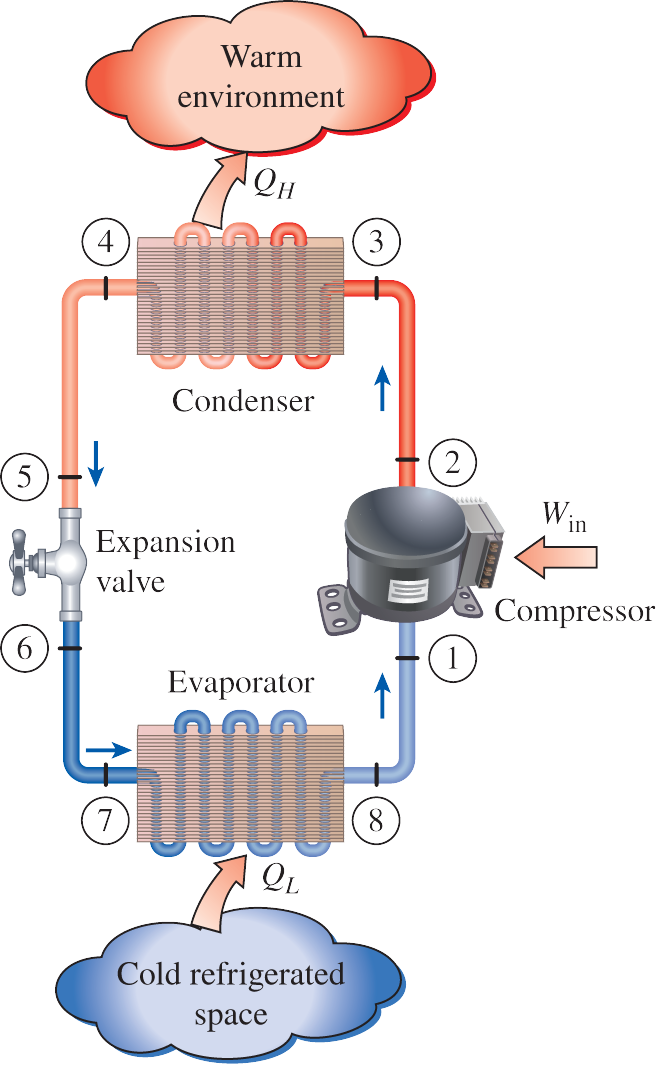
Actual Vapor-Compression Cycle Diagram

Cascade Refrigeration System Diagram
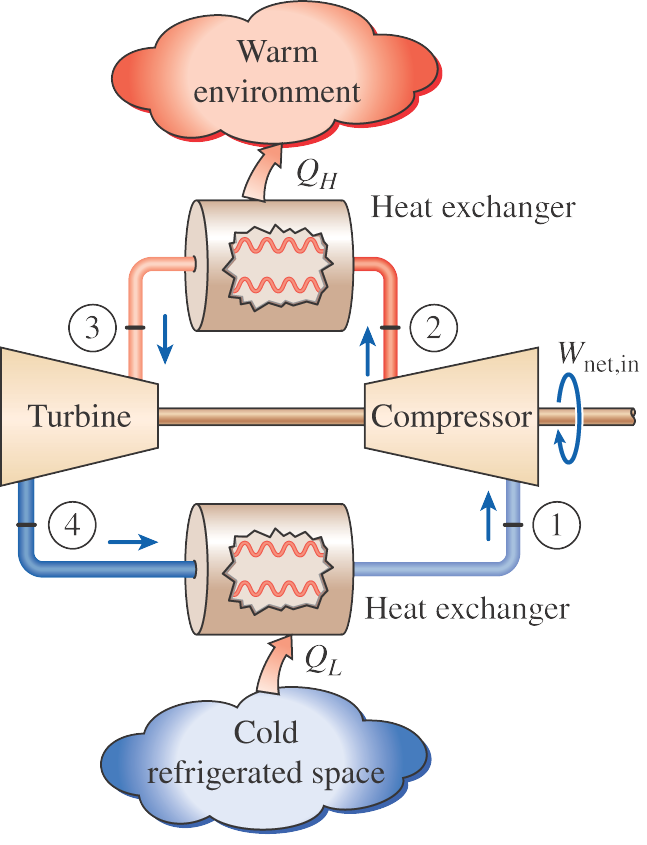
Reverse Brayton Cycle Diagram
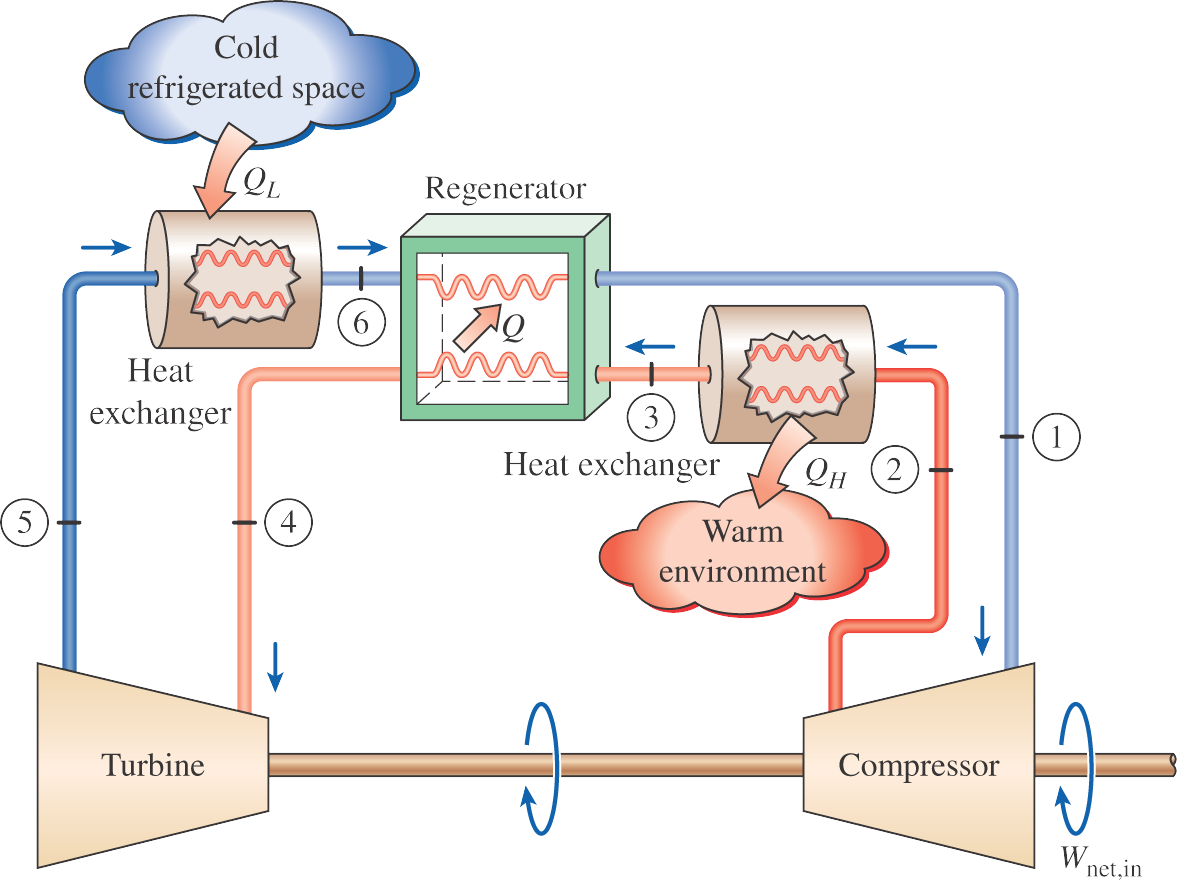
Reverse Brayton Cycle with Regeneration Diagram
In Diesel cycle, the heat addition process takes place at __________.
constant volume
What is the first process of the simple ideal Brayton cycle?
Isentropic compression
What is the second process of the simple ideal Brayton cycle?
constant-pressure heat addition
What is the third process of the simple ideal Brayton cycle?
isentropic expansion
What is the fourth process of the simple ideal Brayton cycle?
constant-pressure heat rejection
In a simple ideal Brayton cycle, when the pressure ration increases, the thermal efficiency _____.
increases
The ratio of the compressor/pump work input to the turbine work output.
Back work ratio
In the Brayton cycle, the thermal efficiency _____ due to inefficiencies of the turbine and the compressor.
decreases
In a Brayton cycle, regeneration _____ the thermal efficiency of the system.
increases
What is the equation for the effectiveness of a regenerator used in Brayton cycles?
ε = qregen, act / qregen, max
In an ideal regenerator, the air leaving the compressor is heated to the temperature ________.
at the turbine exit
Heat engines convert thermal energy to _____.
work
On a T-s diagram, a heat-addition process proceeds in the direction of _____ entropy.
increasing
An isentropic process proceeds at a _____ entropy.
constant
In the Otto cycle, the combustion process is initiated by a _________.
spark plug
In the Diesel cycle, the combustion process is initiated by a _________.
fuel injector
Process 2-3 in the Diesel cycle occurs at a constant ______.
pressure.
Process 2-3 in the Otto cycle occurs at a constant ______.
volume
The compression ratio (r) is the ratio of the _____ volume to the ______ volume.
maximum, minimum
Processes 0-1 and 1-0 of the Otto cycle occur at a constant _____.
pressure
In the Otto cycle, as the compression ratio (r) increases, the thermal efficiency of the cycle _____.
increases
In the Otto cycle, as the specific heat (k) increases, the thermal efficiency of the cycle _____.
increases
In the Diesel cycle, as the cutoff ratio (rc) increases, the thermal efficiency of the cycle _____.
decreases
The Diesel cycle is _____ efficient than the Otto cycle.
more
The Brayton cycle operates on a _____ cycle.
closed
In the Brayton cycle, as the pressure ratio (rp) increases, the thermal efficiency of the cycle _____.
increases
In the Brayton cycle, as the specific heat (k) increases, the thermal efficiency of the cycle _____.
increases
In the Brayton cycle, regeneration causes the heat input to _____.
decrease
In the Brayton cycle, regeneration causes the net work output to _____.
decrease
In the Brayton cycle, intercooling causes the specific volume of the working fluid to _____ during the compression process.
decrease
In the Brayton cycle, reheating causes the work output of the turbine to ______.
increase
In the Brayton cycle, reheating causes the thermal efficiency to _____.
decrease
In the Brayton cycle, intercooling causes the thermal efficiency to _____.
decrease
The reverse Carnot cycle is impractical because process 2-3 involves the compression of a _____, requiring a compressor that can handle ______.
liquid-vapor mixture, two phases
The reverse Carnot cycle is impractical because process 4-1 involves the expansion of _____ refrigerant in a turbine.
high-moisture-content
In the ideal vapor-compression refrigeration cycle, the _____ is replaced with a ______.
turbine, throttling device.
The irreversibility in the ideal vapor-compression refrigeration cycle is caused by which device?
Throttling device
In the ideal vapor-compression refrigeration cycle, two common sources of irreversibilities are _____ and _____.
fluid friction, heat transfer
The cascade refrigeration system preforms well when _____ temperatures are required.
moderately low
The cascade refrigeration system preforms well when ______ temperature ranges are required.
large
Cascading _____ the COP of a refrigeration system.
increases
Unlike the Carnot cycle, in teh reversed Brayton cycle, heat transfer processes are not ______.
isothermal
Gas refrigeration cycles have _____ COPs than vapor-compression refrigeration cycles.
lower

Brayton Cycle with Intercooling T-s Diagram
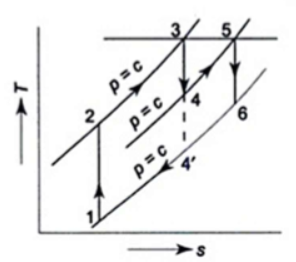
Brayton Cycle with Reheating T-s Diagram